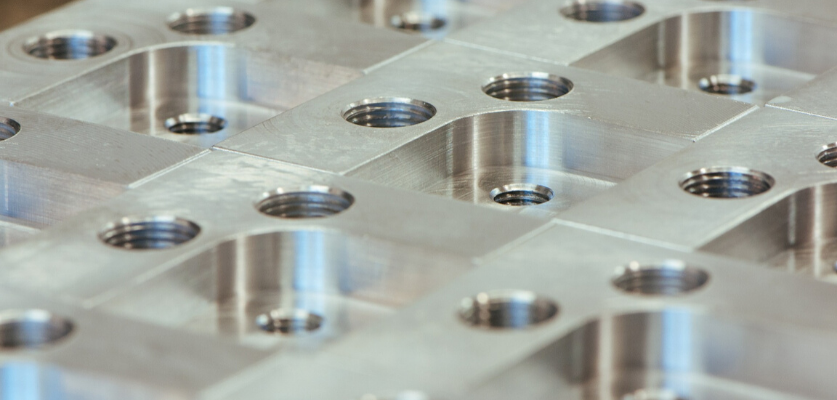For prototype and end-use parts, accuracy is a very important aspect of metalworking. Accuracy means you get a part that looks and feels exactly as you designed it, with no errors that could affect mechanical function.
Thanks to the rise of CNC machines, metalworking is now more precise than ever. Machinists can use a computer to program the trajectory of a cutting tool to a micrometer, virtually eliminating inaccuracies caused by human error. As long as the CNC machine is set up correctly, it should cut metal parts with high accuracy.
But there are many factors that affect the accuracy of metal processing. Machine quality, material selection, and even room temperature can all play a role, and some customers may have very different accuracy requirements than others.
This article discusses the ins and outs of precision metalworking, explaining concepts such as accuracy, precision, and tolerances.

What Is Accuracy?
Although accuracy and precision seem to be synonymous, they have different meanings when it comes to machining. Therefore, it is important to understand what we mean by the different terms.
In the context of metalworking, accuracy is the degree to which a machine can match the measurements specified in the design.
If a machine can cut at the exact location specified in the design, then it has high accuracy.
If it misses the target occasionally, but hits the right spot on average, then we can say it still has high accuracy.
What Is Machining Repeatability Or Precision?
Machining accuracy refers to the similarity of measurements over multiple attempts or between multiple copies of a part.
In other words, a machine is highly precision if it hits exactly the same point on 100 copies of a part.
This is not the same as accuracy because precision doesn’t particularly care if the “point” is the same as specified in the design! A machine can be very precise, even though it always cuts 3mm to the left of the intended mark.
Obviously, it is important to have both accuracy and precision.
Accuracy means you’re hitting the coordinates specified in the design, and precision means you’re hitting them consistently across multiple units.
What Are Machining Tolerances?
In machining, tolerance refers to the deviation from the value of cutting. So it’s about precision, but it’s a customer-specified value, not a property of the machine itself.
If a customer requires a feature of a part to be very consistent between elements, they will specify a tight tolerance on that feature to allow for minimal deviation. In practice, this means that the machine has to be operated more slowly and carefully.
If a looser tolerance is specified—for example, on a non-mechanical feature—machining can be done faster.
Although tolerances are defined by the customer, machines typically specify their standard and smallest possible tolerances.
What Contributes To The Accuracy Of A CNC Machine?
The accuracy of a CNC machine depends on several factors, some of which are determined by the manufacturer of the CNC machine, and some that can be controlled by the machinist.
In order to achieve precise metal machining, the following factors must be considered:
Machine Quality:
Well-made machines with high-quality components will generally produce more accurate parts than low-quality machines.
Machine Condition:
CNC machines contain countless components, so proper maintenance is critical to keeping them accurate.
Tool Condition:
Dulled and worn tools that show signs of flank wear, crater wear, etc. can reduce the accuracy of CNC machines, so they must be kept in good condition. Dull tools also increase cutting temperatures, another factor that reduces accuracy.
On-board Inspection:
Feedback tools such as on-board probes can tell the machinist whether the machine is cutting accurately during the job. These tools can also be used to correct any deviations in real-time, improving accuracy.
Temperature And Humidity:
The working environment will affect the machining accuracy. Although the machine is capable of cutting parts in warm conditions, thermal consistency must be maintained to avoid deviation.
Calibration:
Machine tools should be calibrated regularly to maintain accuracy.
What Is The Best Metal For Precision Metalworking?
Precise metalworking is best achieved with materials suitable for CNC machining.
Because while even the hardest metals and alloys can be machined with precision, some difficult-to-machine materials can negatively impact machining accuracy.
The machinability of a metal is the ease with which a cutting tool can cut it. Quickly cuts highly machinable metals at low power, producing a high-quality finish without significant wear on the cutting tool.
Some highly machinable metals include:
Aluminum 6061
Aluminum 7075
Aluminum 2024
Stainless Steel 303
Stainless Steel 304
Brass C35300
In theory, a good CNC machine should still be able to cut hard-to-machine metals, albeit with more time and power consumption.
But these hard-to-machine metals can have an indirect negative impact on accuracy.
Unmachinable metals can significantly increase tool wear, while dulled tools can reduce machine precision and precision.
Also, most clients want to find a good balance between speed and accuracy. If precise metal machining requires extremely low cutting speeds because the metal is difficult to machine, the project may not be worth the trouble.
When Is Precise Metalworking Required?
Accurate metalworking is important for a number of reasons, from guaranteeing customer satisfaction to ensuring the mechanical functionality of a part.
Items that require high precision may include:
Metal prototypes marketed by investors, with apparent inaccuracies that can give senior professionals a negative impression.
Mechanical parts that interact with other parts. Proper functionality can be controlled by specifying appropriate tolerances, but good precision is still required to ensure compatibility between parts.
Offer jobs to potential long-term partners. When you work with new customers, you increase your chances of building long-term partnerships by providing them with precisely machined parts from the start. In some cases, customers will only accept orders if a certain level of accuracy can be guaranteed.


